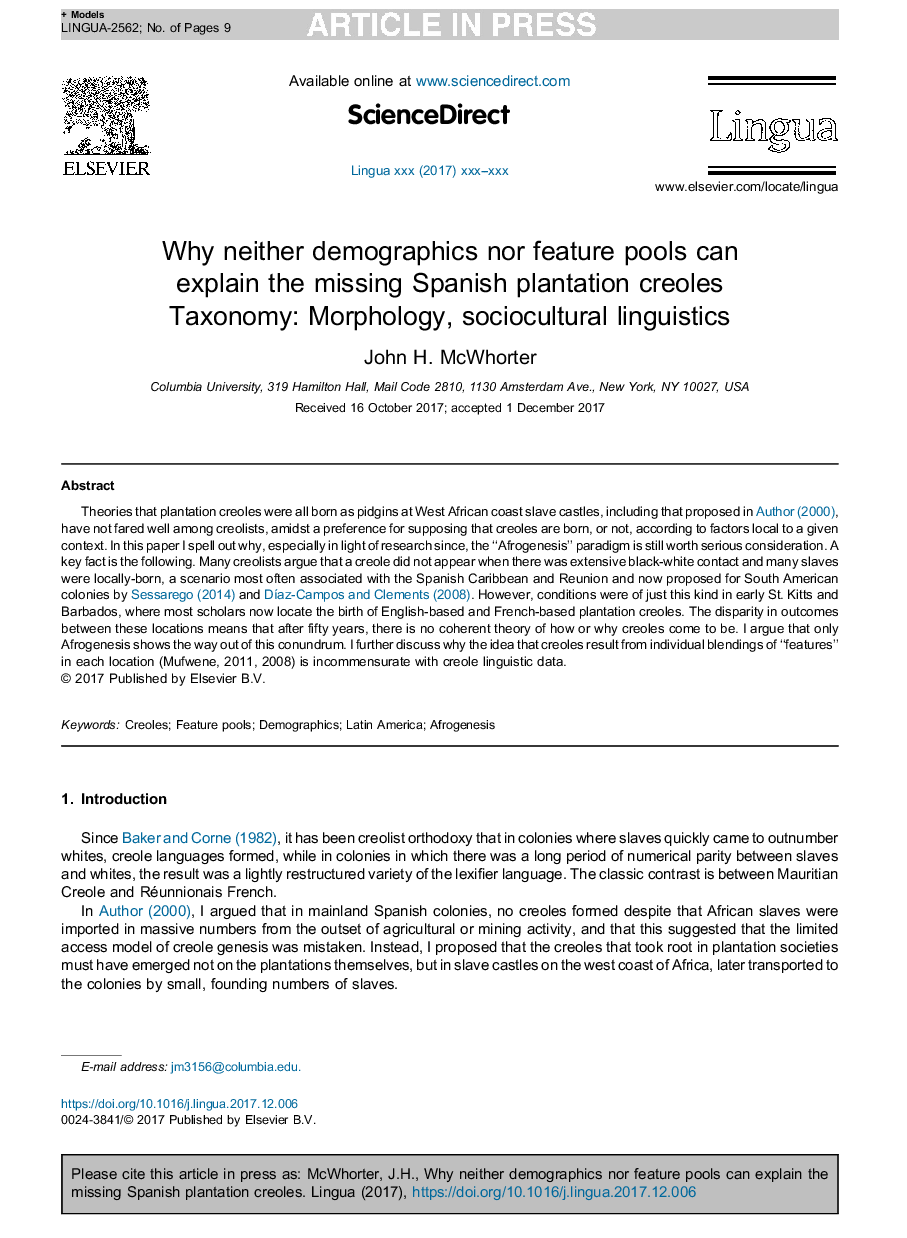| Article ID | Journal | Published Year | Pages | File Type |
|---|---|---|---|---|
| 7298426 | Lingua | 2018 | 9 Pages |
Abstract
Theories that plantation creoles were all born as pidgins at West African coast slave castles, including that proposed in McWhorter (2000), have not fared well among creolists, amidst a preference for supposing that creoles are born, or not, according to factors local to a given context. In this paper I spell out why, especially in light of research since, the “Afrogenesis” paradigm is still worth serious consideration. A key fact is the following. Many creolists argue that a creole did not appear when there was extensive black-white contact and many slaves were locally-born, a scenario most often associated with the Spanish Caribbean and Reunion and now proposed for South American colonies by Sessarego (2014) and DÃaz-Campos and Clements (2008). However, conditions were of just this kind in early St. Kitts and Barbados, where most scholars now locate the birth of English-based and French-based plantation creoles. The disparity in outcomes between these locations means that after fifty years, there is no coherent theory of how or why creoles come to be. I argue that only Afrogenesis shows the way out of this conundrum. I further discuss why the idea that creoles result from individual blendings of “features” in each location (Mufwene, 2011, 2008) is incommensurate with creole linguistic data.
Keywords
Related Topics
Social Sciences and Humanities
Arts and Humanities
Language and Linguistics
Authors
John H. McWhorter,
